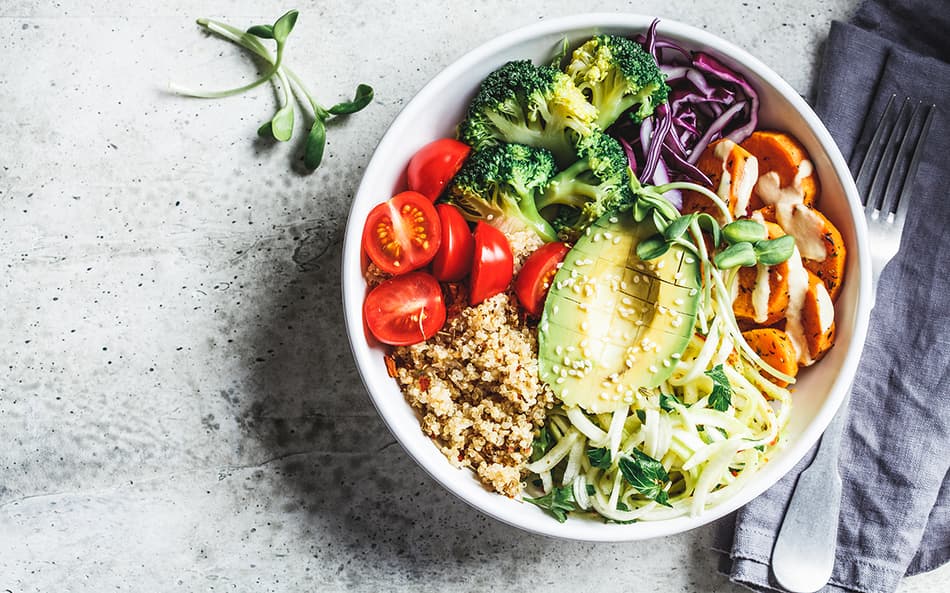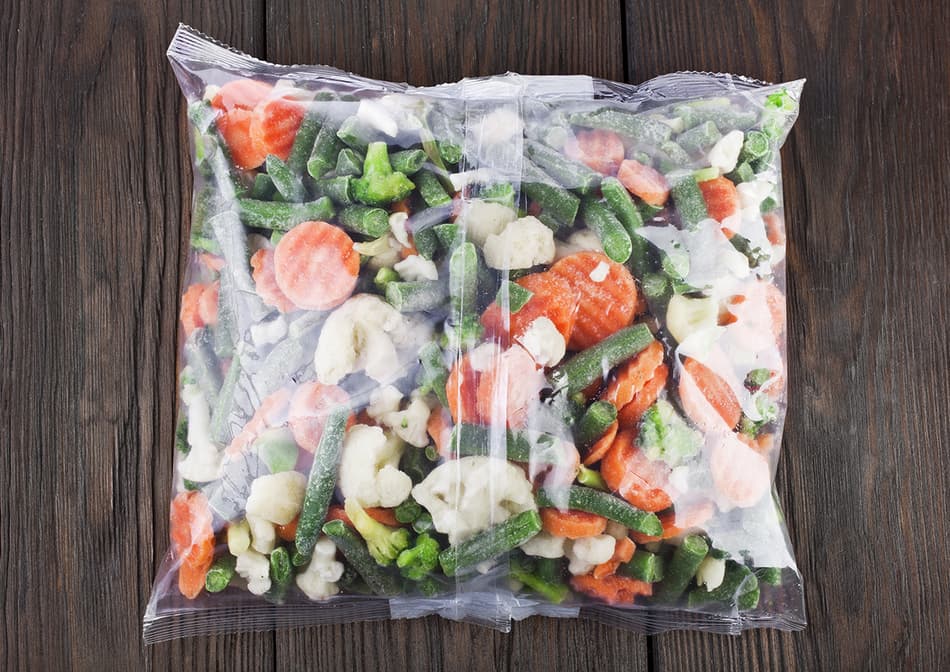Get in touch
Our automation works smarter, wastes less, and optimizes your lines to ensure quality is consistent and potential recalls are a thing of the past.
Speak with us to learn how you can make Every Resource Count!™
Today, we are delighted to give the stage to Jason Schenker, Chairman of the Futurist Institute; President of Prestige Economics and bestselling writer on many innovative topics, such as future food challenges.

There are significant challenges ahead for the future of food. And vegetables could be an important part of that solution. The biggest fundamental drivers of global population and wealth threaten to drive up global calorie demands. While emerging dietary, packaging, and waste trends highlight the potential for vegetables to become a meaningful way in which calories of food that are already being produced could be stretched further.
As we take a futurist perspective, the global NGO and investor push toward sustainability, increased visibility, more efficient technological leverage, and the potential profitability of accelerating business cases present significant opportunities for vegetables to become a critical part of the solution to nourishing global citizens in the decade ahead and beyond.
The future of food and agriculture through 2050 will be typified by a global hunt for calories. The twin factors that will drive this demand are a rise in the global population and an increase in real global incomes. Between 2020 and 2050, the global population is slated to grow by 2 billion people. Over that same period, real per capita incomes are slated to rise sharply, especially in China, India, and other emerging markets.
Original research from The Futurist Institute on future global calorie consumption and the likely trajectory of global growth in the next thirty years, we expect that global calorie demand is poised to rise by 44 percent through 2050. This means that either a lot more food will need to be grown for consumption or we will need to find ways to use the calories we are currently producing more efficiently. In reality, the future is likely to reflect a mix of those two options.
Additionally, a rise in water consumption would likely accompany an increase in global food production, meaning that more efficient use of the calories we are currently producing could be valuable from a water conservation and an overall environmental impact standpoint.
Not all food and agricultural demand is equal, and vegetables are riding a wave of demand from several different consumption trends. First, the number of vegan and vegetarian consumers is on the rise. Second, consumers of health foods often display price inelastic demand for healthy foods, for which vegetables also fit the bill quite nicely. Finally, other rising food consumption trends like paleo dieters and halal foods also align with vegetables. In many ways, vegetables are an important market – and both demographics and customer preferences are likely to send demand higher in the years ahead asymmetrically.

The vegetable market’s supply side also promises to meet this rise in demand, as the trend to reduce food loss and waste gains traction. A widely known example of this is the trend of buying so-called ugly foods. Because some fruits and vegetables don’t look like they are “supposed to,” consumers won’t buy them, so stores won’t stock them. But while their appearance may not be ideal, they are still fit for consumption. It might be odd-shaped zucchini and squash, or cucumbers and peppers. Increased awareness about these ugly foods has resulted in a demand for the goods because it is an environmentally conscious thing to do and because ugly foods are often cheaper.

In terms of increasing consumption of the vegetables that are currently being lost or wasted, these vegetables are also a kind of low-hanging fruit, if I may use such a pun. After all, it is a lot easier to maximize the use – and reduce the waste – of vegetables to help meet food and calorie demands.
This emerging fad is likely to gain momentum as a push to reduce food waste – and more importantly – food loss becomes a global priority. And it reduces waste while also supporting demand.
The topic of food loss and waste has garnered increased attention recently. In fact, most recently, on 29 September 2020, the United Nations Food and Agriculture Organization (FAO) celebrated the International Day of Food Loss and Waste Awareness. (1) While many people are aware of food waste that people or retailers throw away, people often overlook the importance of food loss.
Although often used interchangeably, food loss refers to food lost in production, harvest, storage, and transportation. In contrast, food waste refers to items that could be eaten and are “fit for human consumption,” but are thrown away – and wasted – by supermarkets or consumers. (2)

Food loss and waste is a big problem and there is a big opportunity to reduce food loss. According to the initial estimates made by the FAO for the Food Loss Index, around 14% of the world’s food is “lost from post-harvest up to (but not including) the retail level.” (3) Earlier estimates placed the global food loss level around 1/3 of the world’s food production every year. Cost estimates for food lost or wasted are around 2.6 trillion USD annually. (4)
Because of the important opportunity presented by reducing food loss and waste, the United Nations has set a goal of greatly reducing food loss and waste. It is even part of the UN’s sustainable development goals, with a tangible goal to reduce per capita food waste at retail and consumer levels by 50% by 2030, as well as “reducing food losses along production and supply chain.” (5)
The reason the topic of food loss is so critical for vegetables is that fruits and vegetables experience a 21.6 percent annual loss of all vegetables produced - the second-highest percent of food loss across FAO categories.
In other words, if supply chain efficiency, processing, harvesting, storage, and transport could be made more efficient, there could be tremendous gains in food loss reduction for vegetables that go well beyond the savvy marketing of ugly foods.
The good news is that the food loss in vegetables is not the same as waste at the consumer or the supermarket level. The upside here is that food loss can be greatly reduced by businesses with more central control than individuals. It is similar to the way that industrial recycling is much more effective than post-consumer recycling.

One of the critical levers to improve access and efficiency in the global vegetable market in the decade ahead and beyond will be technology. For many years, trends in digital transformation have been impacting and disrupting countless industries. And this process has accelerated following the COVID-19 pandemic.
After COVID-19, all industries – including food and agriculture - are technology industries. The use and adoption of new technologies that will support food and agricultural supply chains in the decades ahead in two ways. First, there are physical new technologies, and second is the computational, platform, and software technologies.
On the platform and software side of the agricultural supply chain, blockchain has become an important tool for some major companies to gain better visibility over their physical ag supply chains – and to improve food safety while also reducing food loss and food waste.
The use case for blockchain technology that includes distributed information about food origins and transactions can help accelerate the time it takes to identify food contamination issues, and it can pinpoint which products may be impacted. This would reduce the scattershot approach to addressing food safety in the past where any product or group of products has been immediately deigned waste in the lack of more precise information about ag sourcing.
The truth is that people want to know where their food comes from and they want to trust that it is safe. This was true before the COVID-19 pandemic, but it is doubly true now. Plus, blockchain deployment has helped reduce food loss and waste by making it easier to identify and trace vegetables and other agricultural products that have become contaminated.

Of course, blockchain is not the only important technology for the future of agriculture and vegetables. As we consider the potential to reduce food loss and waste, data collection and data analysis offer tremendous prospects for positive impact. Increased use of sensors and IoT devices will provide the data that fosters predictive analytics, machine learning, and artificial intelligence to make food supply chains, harvesting, and other activities significantly more efficient. Plus, more advanced bleeding-edge technologies like quantum computing could also become a critical source of computational leverage in the decade ahead and beyond that drive maximum calorie allocation and use. Maximizes efficiency.
As for a physical technology that could meaningfully impact the food and vegetable markets, industrial drones are also likely to be critical in the years ahead for shortening physical supply chains for more remote crops and agricultural products. Drones on the ground (think: self-driving farming equipment) are also likely to become an increasingly significant part of the future path forward for ag.
The increasing importance of technology is something that has become true of food, agriculture, and supply chain industries. Looking at the decades ahead, many general-purpose technologies will become increasingly important for meeting global calorie demand – and making sure global supplies are optimized.
During the COVID-19 pandemic, food security became a concern for many consumers. Even after having lived through its first wave, the demand for contactless clean foods remains strong – and is poised to remain high for some time. This demand represents a pairing of the recent dual trends signaling demand for both healthy foods and convenience foods.

